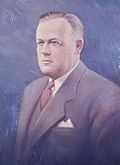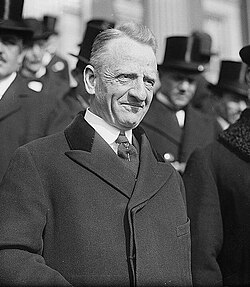November 3, 1936 | ||||||||||||||||||||||||||||||||||||||||||||||||||||||||||||||||||||||||||||||||||||||||||
32 of the 96 seats in the United States Senate 49 seats needed for a majority | ||||||||||||||||||||||||||||||||||||||||||||||||||||||||||||||||||||||||||||||||||||||||||
|---|---|---|---|---|---|---|---|---|---|---|---|---|---|---|---|---|---|---|---|---|---|---|---|---|---|---|---|---|---|---|---|---|---|---|---|---|---|---|---|---|---|---|---|---|---|---|---|---|---|---|---|---|---|---|---|---|---|---|---|---|---|---|---|---|---|---|---|---|---|---|---|---|---|---|---|---|---|---|---|---|---|---|---|---|---|---|---|---|---|---|
| ||||||||||||||||||||||||||||||||||||||||||||||||||||||||||||||||||||||||||||||||||||||||||
 Results of the elections: Democratic gain Democratic hold Republican gain Republican hold Farmer–Labor hold Independent gain No election | ||||||||||||||||||||||||||||||||||||||||||||||||||||||||||||||||||||||||||||||||||||||||||
| ||||||||||||||||||||||||||||||||||||||||||||||||||||||||||||||||||||||||||||||||||||||||||
The 1936 United States Senate elections coincided with the reelection of President Franklin D. Roosevelt. The 32 seats of Class 2 were contested in regular elections, and special elections were held to fill vacancies. The Great Depression continued and voters backed progressive candidates favoring Roosevelt's New Deal in races across the country. The Democrats gained 5 net seats during the election, and in combination with Democratic and Farmer–Labor interim appointments and the defection of George W. Norris from the Republican Party to become independent, the Republicans were reduced to 16 seats. Democrats gained a further two seats due to mid-term vacancies. The Democrats' 77 seats and their 62-seat majority remain their largest in history.
Contents
- Gains, losses, and holds
- Retirements
- Defeats
- Death
- Independent gain
- Post-election changes
- Change in composition
- Before the elections
- Result of the elections
- Beginning of the next Congress
- Race summaries
- Elections during the 74th Congress
- Elections leading to the 75th Congress
- Closest races
- Alabama
- Arkansas
- Colorado
- Delaware
- Florida (special)
- Florida (special, class 1)
- Florida (special, class 3)
- Georgia
- Idaho
- Illinois
- Iowa
- Iowa (regular)
- Iowa (special)
- Kansas
- Kentucky
- Louisiana
- Louisiana (regular)
- Louisiana (special)
- Maine
- Massachusetts
- Michigan
- Minnesota
- Minnesota (special)
- Minnesota (regular)
- Mississippi
- Montana
- Nebraska
- New Hampshire
- New Jersey
- New Mexico
- New Mexico (special)
- New Mexico (regular)
- North Carolina
- Oklahoma
- Oregon
- Rhode Island
- South Carolina
- South Dakota
- Tennessee
- Texas
- Virginia
- West Virginia
- Wyoming
- See also
- Notes
- References
This was the last of four consecutive election cycles where Republicans suffered losses due to the ongoing effects of the Great Depression. This was also the last Senate election cycle until 2012 in which a Democratic candidate who won two terms also made net gains in the Senate on both occasions (although Roosevelt won a third term and fourth term, he lost Senate seats on both occasions). Additionally, this is the last time any party held three-fourths of all Senate seats.



























































































